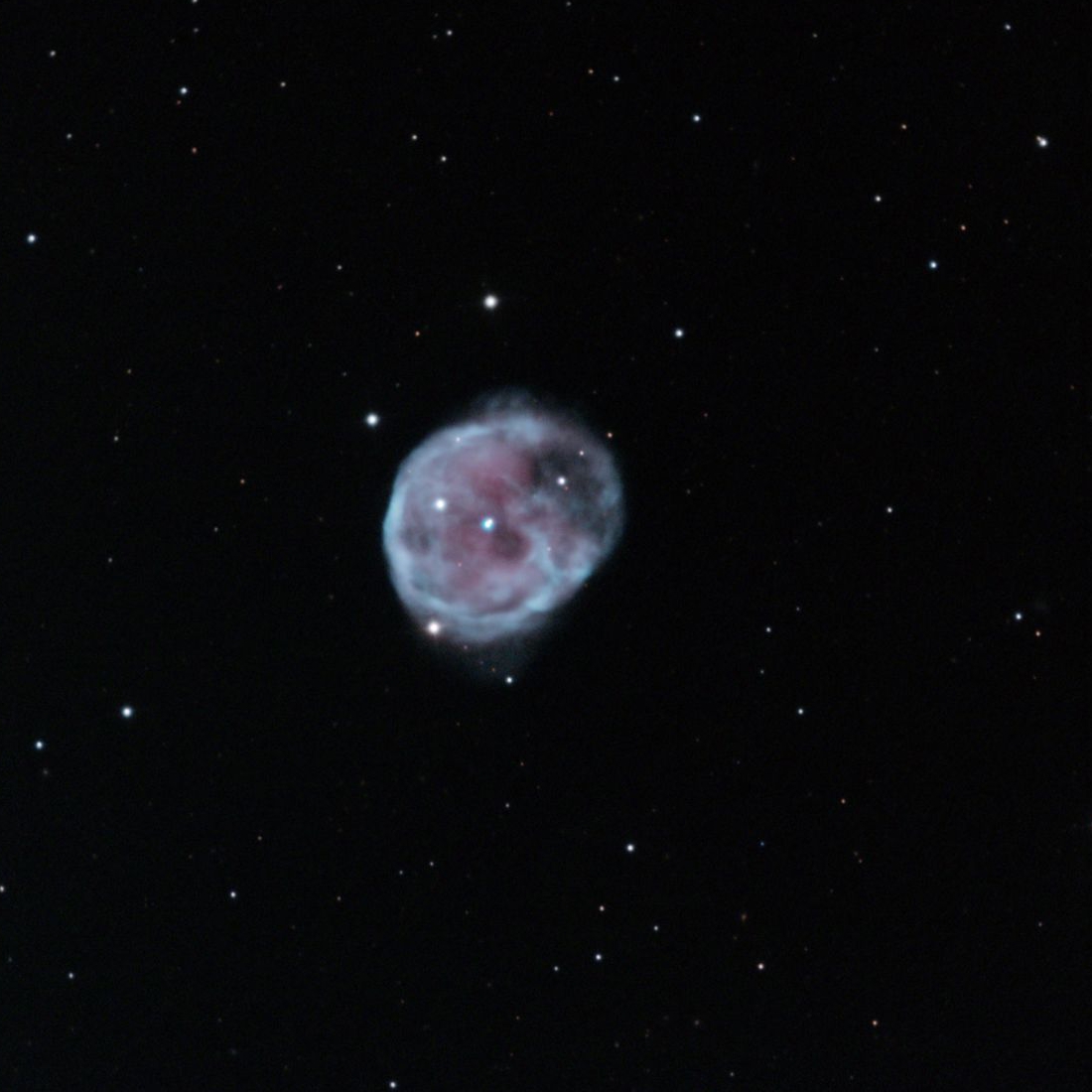
Click here for full resolution image
NGC 246 is a large and bright enough planetary nebula to have been discovered by William Herschel as early as 1785. It is also called the Skull Nebula. As usual with planetary nebulae, this is the ejected outer envelope of a once sun-like star. Remarkable in this nebula is that its central star, a white dwarf (as usual), is a double star (as it can be seen in the picture). This has been known for many years, but quite recently, a German team determined, using HST observations during the last 20 years, that it is a triple star. Better said, the white dwarf (called HIP 3678 A, mag +11.8, here showing a bluish color) is indeed a double star, having a smaller close companion, HIP 3678 C, separated less than 1 arcsec, and hence not visible in this image. HIP 3678 B is the reddish dimmer star (mag +14.3) at its upper right and is 3.9 arcsec away.
Additional Information
Object
Name(s): NGC 246. Caldwell 56. Skull Nebula
Type: Planetary Nebula
RA: 00h 47m 02.9s
Dec: -11º 52’ 28.3”
Constellation: Cetus
Size (arcmin): 4.6×4.0
Magnitude: 10.9
Distance: 1,500 ly
Image
Date: 2015-09-20 to 2015-10-12
Location: iTelescope.net, SSO near Coonabarabran, NSW Australia
Size (arcmin): 28×22
Telescope: Planewave CDK 20” f/6.8
Camera: SBIG STX16803 (4096x4096pix)
Guiding: Astrodon MonsterMOAG off-axis guider
Total exposure: 15.25 hs (Halpha: 8.5 hs; OIII: 4.5 hs; RGB: 2.25 hs)
Processing: CCDStack, Photoshop CC 2016 and PixInsight